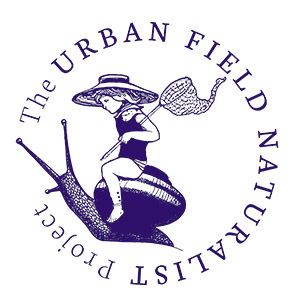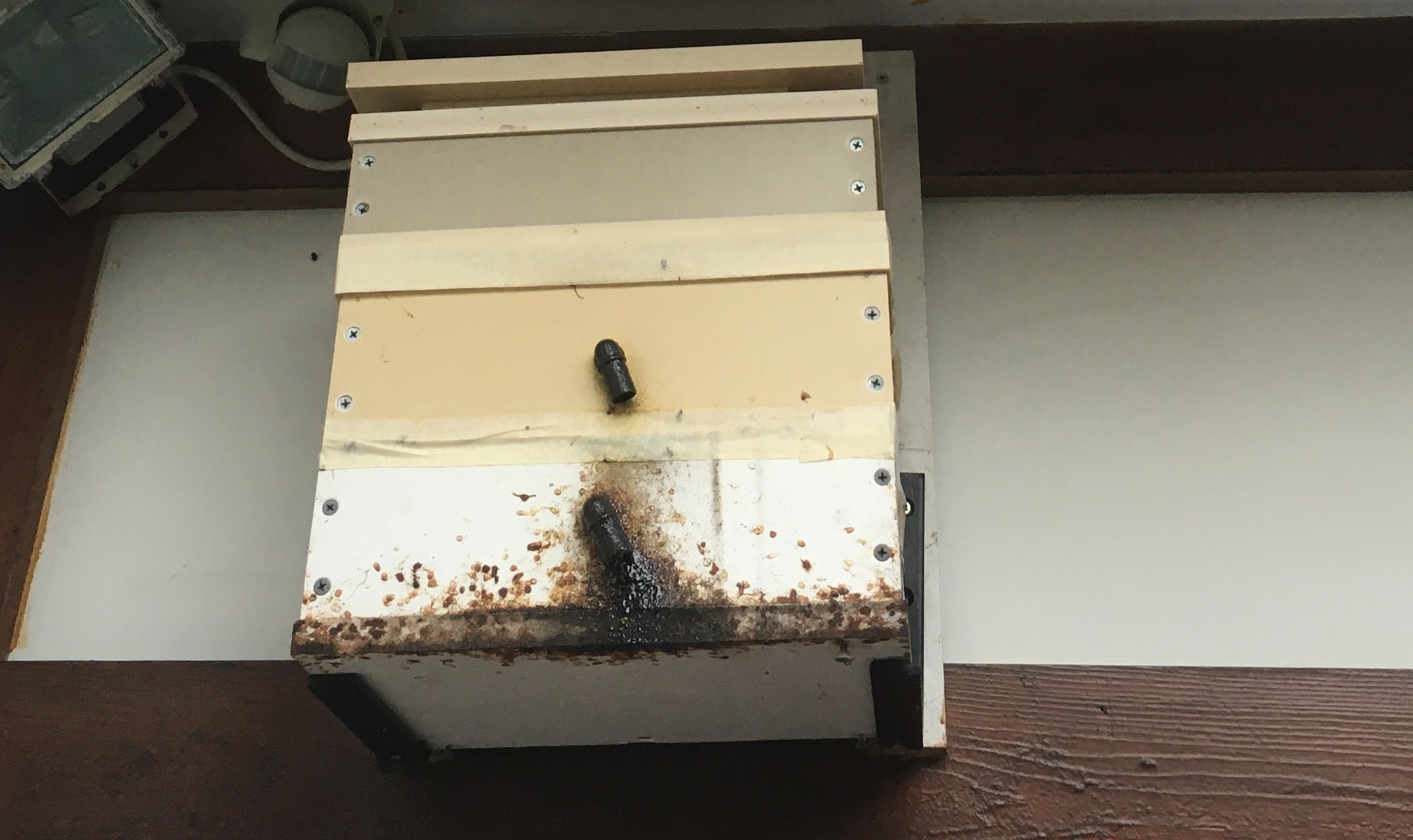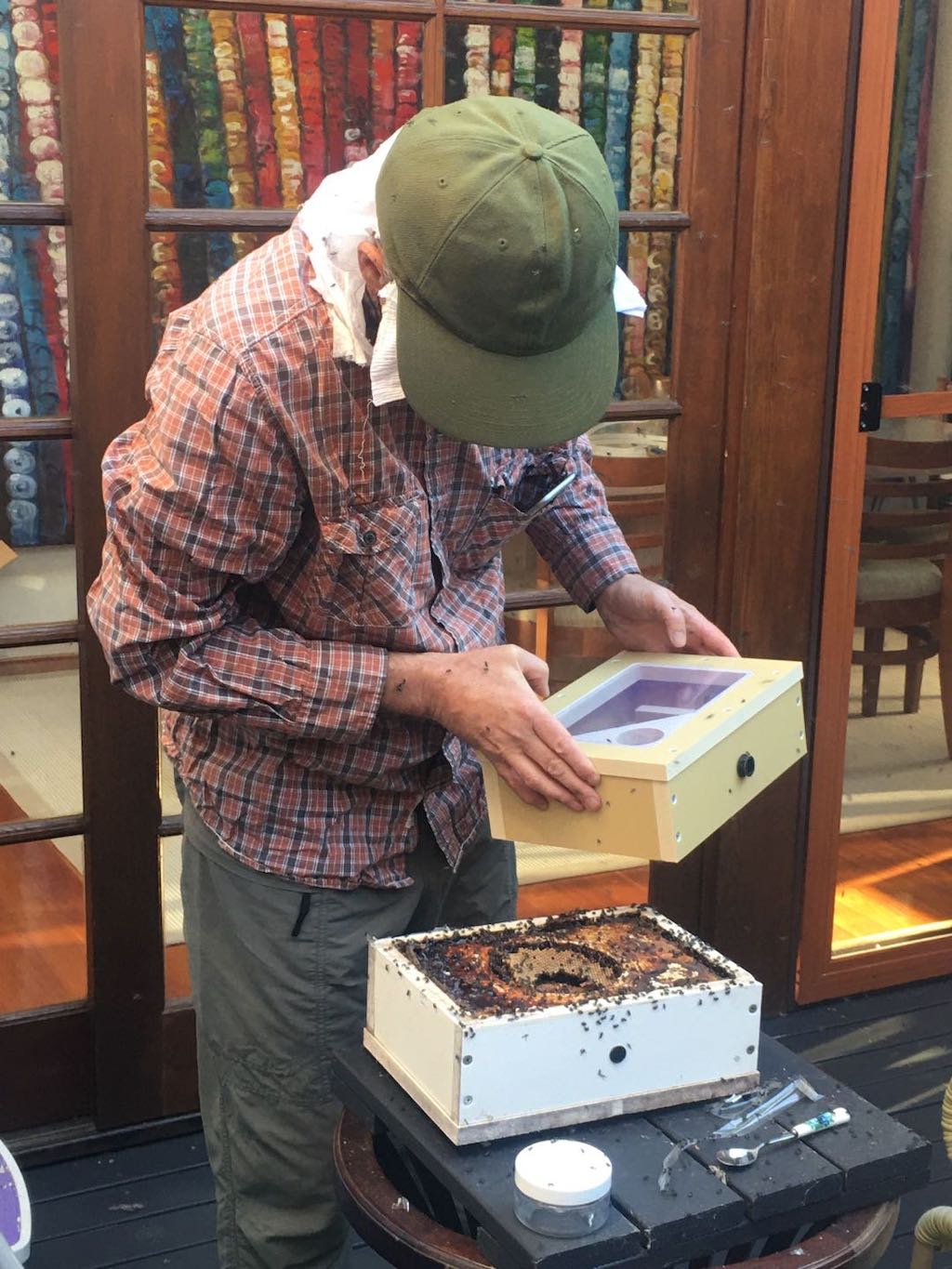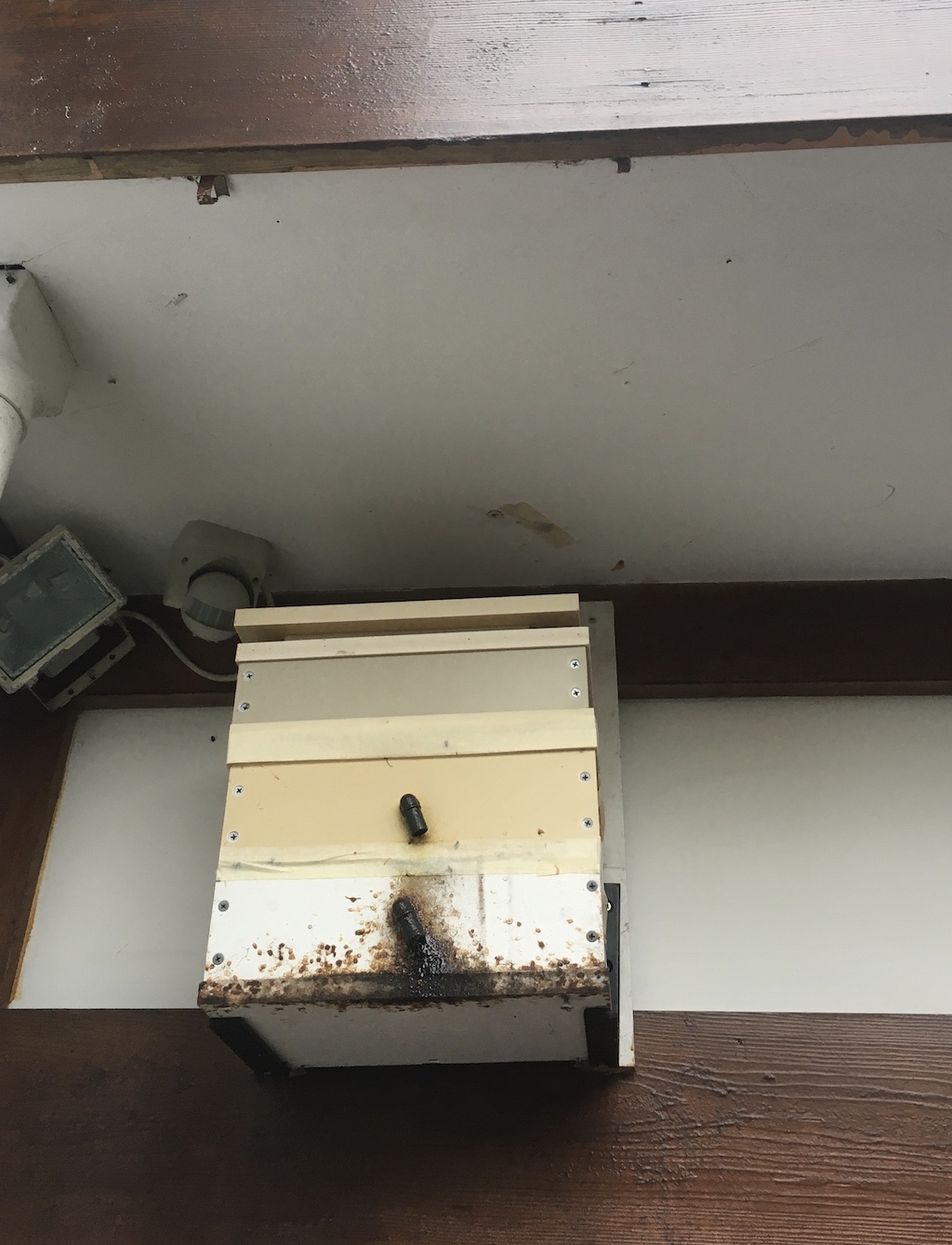
Native Stingless Bees are Fun, Interesting and Good to Have Around
Ron Haering

My first hive of Australian native stingless bees (Tetragonula carbonaria) arrived by post from Queensland about four years ago. I placed the hive under an eave in a bright, but protected location. It weighed about five kilograms and was easy to install.
Since that time my bees have provided endless hours of interesting activity. In the warmer months, they forage for pollen and nectar returning with two bright yellow bags of food tucked under their hind limbs. They guard and maintain the hive entrance and are constantly cleaning and tossing out unwanted rubbish.
During winter, they occasionally stumble out of the hive and fall to the ground where they clamber together to keep warm. They readily climb onto a stick and I place them back at the hive entrance and they slowly crawl back inside.
I have split my hive twice and now have three hives. The inside of the hive is fascinating to see with its beautifully shaped honey and pollen pots and whirling brood comb.
This year I also installed a honey super on the top shelf. The honey is a small bonus. The real pleasure is just watching these mighty insects going about their business each day. We need more native bees.


Author bio: Ron Haering is a senior project officer with the NSW National Parks and Wildlife Service